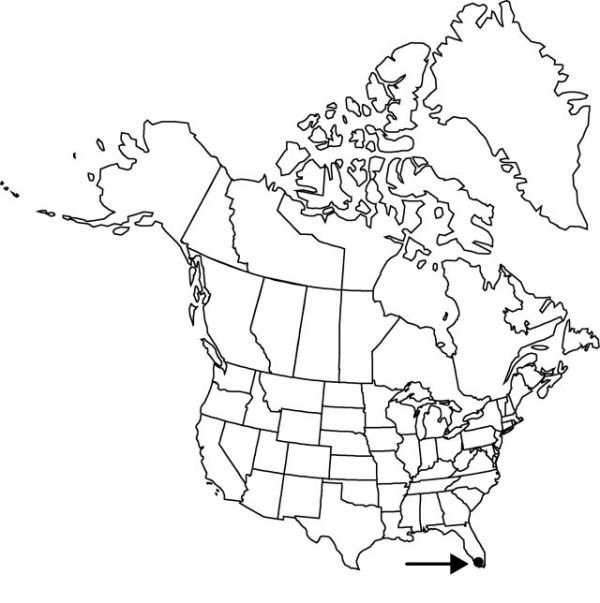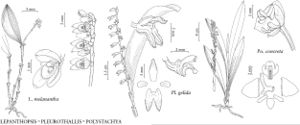Pleurothallis gelida
Edwards’s Bot. Reg. 27: Misc. 91. 1841.
Plants cespitose, 10–45 cm. Roots coarse. Stems 10–25 cm; sheaths 2–3, loose, inflated. Leaves: petiole 1–4 cm; blade narrowly elliptic to oblanceolate, 10–20 × 2.5–10 cm, base cuneate, apex obtuse. Inflorescences apical, many-flowered racemes, simultaneous, 10–25 cm; spathe 1–2 cm; bracts 2–3 mm; pedicels 2–4 mm. Flowers: sepals distinct, light yellow, white-pubescent, apex obtuse; dorsal sepal oblong to obovate, concave, 5–8 × 2.5–3 mm; lateral sepals connate near base to form cup, oblong, ovate, oblique, 5–7.5 × 1.5–2.5 mm, apex obtuse; petals translucent white, 3-veined, oblong to obovate, 3–3.5 × 1.75–2 mm, apex obtuse, erose or notched; lip greenish white, 3-veined, oblong to nearly pandurate, curved, 2–2.5 × 0.75–2.25 mm, apex rounded to truncate; disc with pair of lamellae near middle; column 2.5 mm, hooded; ovary 2 mm.
Phenology: Flowering winter and spring.
Habitat: Moist forests
Elevation: 0–60 m
Distribution

Fla., West Indies (Greater Antilles), Central America, South America.
Discussion
Pleurothallis gelida is recognized by a loosely sheathed, stout stem with a solitary, obtuse leaf; several long racemes of small, yellowish flowers that are pubescent within; and fused lateral sepals. It is uncommon in the Fahkahatchee Swamp in Florida.
Selected References
None.
